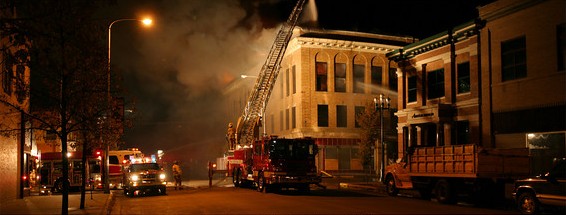
SMOKE CONTROL SYSTEMS
Introduction
The advent of larger buildings containing higher numbers of occupants gave rise to the need for smoke control systems to expedite emergency evacuations. Smoke control systems have been part of theColoradoscene since the late 1970’s, being required in high-rise buildings (over 75’ tall), buildings with atriums and large floor-plate low-rise facilities (covered malls, arenas and convention centers).
Background
A poorly maintained Smoke Control System may not function as intended and may also become a Death Trap unto itself. This is due to the fact that Smoke Control Systems are comprised of fans and dampers using pressures to keep smoke out of stairwells, elevators shafts and non-fire floors. Excessive pressures may result in a stair door having so much pressure behind it that it can not be opened from the fire floor, leaving the occupants stuck on the floor that is filling with smoke – the most deadly aspect of a fire.
Some Typical Problems Found & Possible Solutions
- Failure to have annual tests performed. There are many components in a smoke control system – many that are used for everyday purposes. These can fail or drift out of adjustment.
- Of the systems that are being tested regularly (currently only about 50% are tested on a regular basis), some problems discovered are not being repaired. Many times this is due to the fact that the Testing Company has written a report detailing the problems but without suggestions for fixes. Finding a person who will not only determine the problems but will work with you to correct issues discovered is a key element.
- Lately, the largest issue has been on systems where the Fire Alarm or Building Automation systems were installed or replaced. In some cases, the installing contractor doesn’t always fully understand the complexity of the tie-in between their system and the Smoke Control System. Just prior to this work being started, it is recommended to have a Smoke Control System test performed to confirm the system is in working order. It is a good practice to invite the contractor that will be doing the retrofit to observe the test and understand the smoke control system. After the work is completed (and before final payment) another test should be performed to confirm the system is operational.
- Tenant Finish work. Even though most tenant finish contractors are not aware how their work affects a smoke control system, it can adversely affect it. For instance, if the VAV boxes are part of the smoke control system, any work on them could jeopardize the smoke control system. It is not as simple as having your design approved by the building department. It is best to involve the person who knows the most about your smoke control system and your total building systems.
Bradshaw Building Solutions has the experience and expertise to help improve/maintain your smoke control system at its optimum performance level and ensure a safe environment for your building occupants.
Safety note: Even though the Fire Department is not reminding you each year to have the test performed, it is still required by code and imperative that it be done. THIS IS A LIFE SAFETY MATTER!!!!
